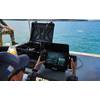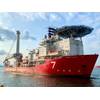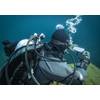Australian Research Vessel Heads South to Study Clouds
The Australian research agency CSIRO’s research vessel Investigator has departed on the longest voyage in its 10-year history to the Southern Ocean and sea-ice edge.
The aim of the 60-day voyage is to explore how links between physics, biogeochemistry, plankton, aerosols and clouds influence the Earth’s climate.
Changes in the Southern Ocean would have profound implications, influencing the rate of climate change, the productivity of the Antarctic ecosystem, and the future of the Antarctic Ice Sheet. Changes in the Antarctic Ice Sheet, in turn, would affect the rate of sea level rise.
Recently published research has shown the “overturning circulation” of Antarctic waters driving global ocean currents may be slowing down, affecting the redistribution of heat, carbon and nutrients across the globe.
Co-Chief Scientist Dr Annie Foppert from the Australian Antarctic Program Partnership at the University of Tasmania said the meltwater from the Antarctic Ice sheet is reducing the amount of dense water sinking to the deep ocean around Antarctica, slowing ocean currents that control climate.
Data collected on the voyage will be compared to earlier measurements to track how the Southern Ocean is changing and what it means for climate and sea level rise.
“To track these changes in the deep ocean, we will deploy a dozen deep-diving robots,” says Foppert. “These new floats, able to collect measurements down to six kilometers below the sea surface, will allow us to track how the ocean is changing for the next five years by profiling the full depth of the ocean. Observing the deep ocean so regularly and over such large swaths was impossible before this new technology.”
The Southern Ocean takes up more of the heat and carbon added by human activities than any other latitude band on the earth.
“A key question is whether the Southern Ocean will continue to remove large amounts of our heat and carbon from the atmosphere, or will the Southern Ocean ‘sink’ become less effective as the climate warms,” Foppert said. “The Southern Ocean has essentially acted as a ‘climate shock absorber’ until now, but we need to probe the ocean depths to see if this will change in the future.”
Scientists onboard RV Investigator from the University of Tasmania and the Bureau of Meteorology will also study gases and particles released by phytoplankton, grown in special aquariums mounted on the ship’s deck to see how effectively they act as ‘seeds’ for new clouds.
Dr Marc Mallet, of the University of Tasmania, said understanding cloud formation in the southern hemisphere was a blind spot for climate science and model projections.
“This voyage will test the hypothesis that aerosols released by phytoplankton ’seed’ clouds and explain the unique properties of the Southern Ocean atmosphere,” Mallet said. “Improved understanding of cloud formation in the region will provide the foundation for more skilful weather and climate projections for Australia and the rest of the globe.”
The voyage from Hobart south to the edge of the Antarctic ice will involve travelling 9,260 kilometers before returning to Fremantle in early March.

















 February 2024
February 2024



